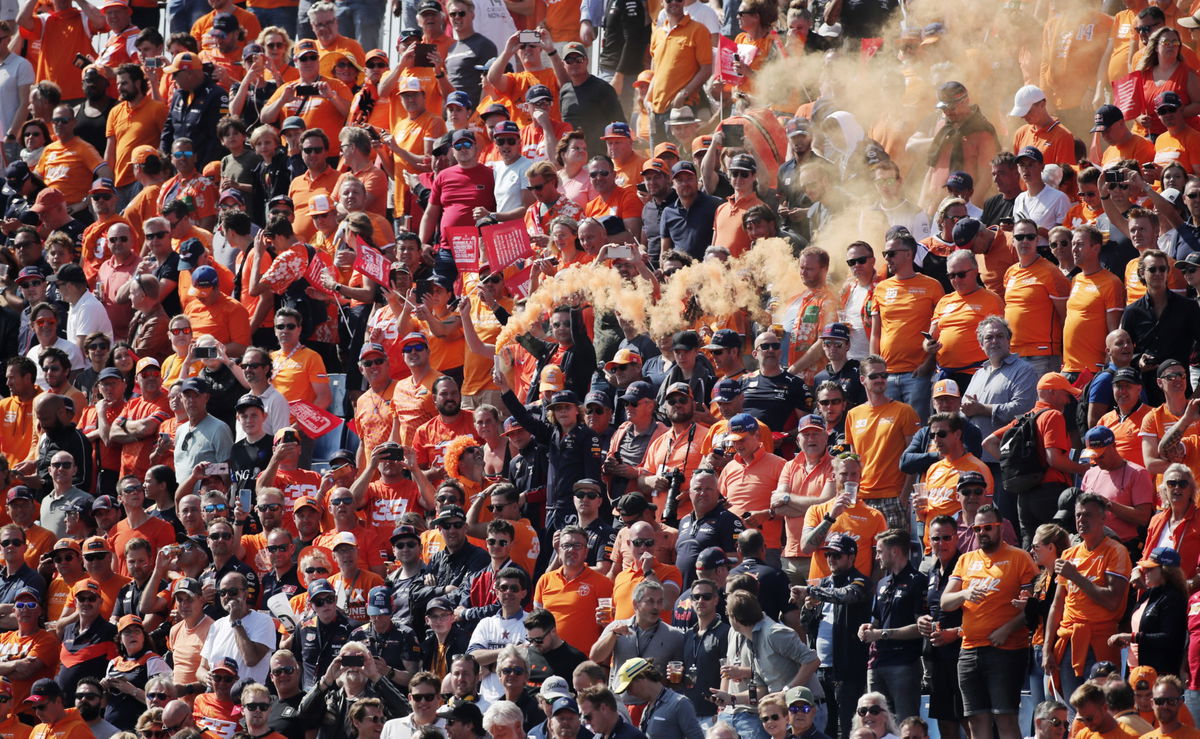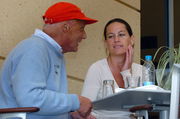
Reuters
Formula One F1 – Dutch Grand Prix – Circuit Zandvoort, Zandvoort, Netherlands – September 5, 2021 Fans are seen in the stand before the race REUTERS/Benoit Tessier

Reuters
Formula One F1 – Dutch Grand Prix – Circuit Zandvoort, Zandvoort, Netherlands – September 5, 2021 Fans are seen in the stand before the race REUTERS/Benoit Tessier
Over the past few years, the Dutch government has been sound in working towards carbon neutrality and many other such initiatives in a bid to improve environmental sustainability. Hence, the Dutch GP, which took place earlier this month, faced a significant amount of opposition from the government.
Watch What’s Trending Now!
Why, you might ask?
Well, you may be aware of how the stands looked after the race weekend at Silverstone and Spa this season. There was plastic trash everywhere. And following the Belgian Grand Prix, the track employees spent over 2 hours collecting the trash in the rain.
ADVERTISEMENT
echt idioot dit pic.twitter.com/5T608rScWL
— amaya (@mevamaya) August 29, 2021
Hence, the environmentalists anticipated a similar scene following the Dutch GP as well. But, much to everyone’s surprise, there was hardly any trash lying around, as the entire track looked absolutely clean.
Of course, part of the credit goes to the 70,000 spectators that swarmed to the circuit for the weekend. However, a large part of the appreciation goes to the organizers, for their smart way of handling the much-feared accumulation of waste.
ADVERTISEMENT
How did Zandvoort prevent the repeat of Silverstone & Spa at Dutch GP?
Joe Pompliano took to Twitter to reveal why Zandvoort portrayed a clean track following Sunday’s Grand Prix. Here’s how the organizers planned the event.
ADVERTISEMENT
3. When fans arrived at the track, they were given a token to exchange for a plastic cup when buying a drink.
If you brought your plastic cup back when buying drink #2, you were given another plastic cup in exchange.
If not, you had to pay 1 euro for a new cup.
— Joe Pompliano (@JoePompliano) September 6, 2021
Each of the spectators entering the track was handed a token, which could be used for the exchange of a plastic cup of drink. For every subsequent drink, the spectators must return the used cup for a fresh cup. If the spectator had neither the cup nor the token, then they must pay 1 Euro for a new cup.
And finally, when the spectator returns the last cup, they will receive the token back. But, here’s something interesting. Each token had a code that the spectator could use to enter a contest that had exciting prizes in return.
ADVERTISEMENT
Four hours after the race. 70,000 fans. Not a single piece of litter dropped. Well played the Dutch. pic.twitter.com/2nt8pEvi0q
— Ben Hunt (@benjhunt) September 5, 2021
Hence, despite over 70,000 fans entering the track, there was hardly any trash left behind, minimizing the job for the employees present at the stands. This is certainly quite a smart way to avoid littering over a race weekend. And North Holland has offered a path for other circuits around the earth to follow.
Top Stories
Adrian Newey’s Motorsport Masterpiece: RB17 vs Aston Martin Valkyrie, Which One Is Better?

3 Years After His Death, Niki Lauda’s Wife Brutally Disrespects Him to Initiate $32,000,000 Battle Against Own Children

Who Is Canadian F1 Billionaire Lawrence Stroll’s Daughter & Heiress Chloe Stroll?

Who Is Oscar Piastri’s Father, Chris Piastri? Co-Founder of Multibillion Dollar Automotive Company

Fans Dig Up the Past to Troll Famous ‘Monaco Youtuber’ Nico Rosberg After Latest Accomplishment

So, will F1 push the organizers to proceed with such ideologies in the future to prevent littering? Well, let’s hope they do.
ADVERTISEMENT
Watch Story: From Spice Girls to Earth Livery: Top 5 F1 Car Launches of All-Time
ADVERTISEMENT
ADVERTISEMENT
ADVERTISEMENT

